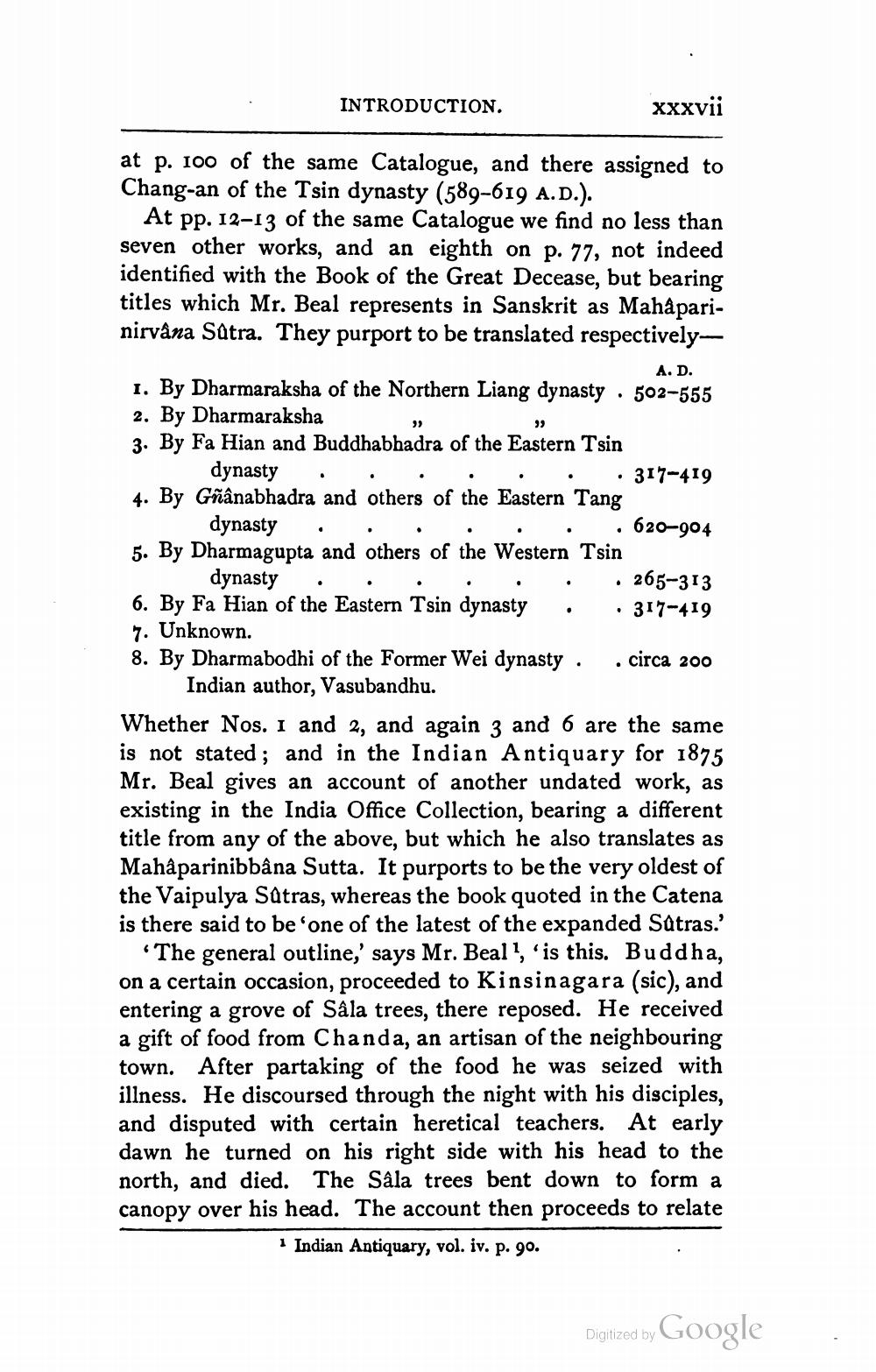________________
INTRODUCTION.
xxxvii
. 620–904
at p. 100 of the same Catalogue, and there assigned to Chang-an of the Tsin dynasty (589-619 A.D.).
At pp. 12–13 of the same Catalogue we find no less than seven other works, and an eighth on p. 77, not indeed identified with the Book of the Great Decease, but bearing titles which Mr. Beal represents in Sanskrit as Mahaparinirvana Satra. They purport to be translated respectively
A. D. 1. By Dharmaraksha of the Northern Liang dynasty · 502-555 2. By Dharmaraksha 3. By Fa Hian and Buddhabhadra of the Eastern Tsin
dynasty . . . . . . . 317-419 4. By Gñânabhadra and others of the Eastern Tang
dynasty . . . . 5. By Dharmagupta and others of the Western Tsin dynasty .
265-313 6. By Fa Hian of the Eastern Tsin dynasty
317-419 7. Unknown. 8. By Dharmabodhi of the Former Wei dynasty . . circa 200
Indian author, Vasubandhu. Whether Nos. I and 2, and again 3 and 6 are the same is not stated; and in the Indian Antiquary for 1875 Mr. Beal gives an account of another undated work, as existing in the India Office Collection, bearing a different title from any of the above, but which he also translates as Mahaparinibbâna Sutta. It purports to be the very oldest of the Vaipulya Satras, whereas the book quoted in the Catena is there said to be one of the latest of the expanded Satras.'
“The general outline,' says Mr. Beal”, “is this. Buddha, on a certain occasion, proceeded to Kinsinagara (sic), and entering a grove of Sala trees, there reposed. He received a gift of food from Chanda, an artisan of the neighbouring town. After partaking of the food he was seized with illness. He discoursed through the night with his disciples, and disputed with certain heretical teachers. At early dawn he turned on his right side with his head to the north, and died. The Sâla trees bent down to form a canopy over his head. The account then proceeds to relate
1 Indian Antiquary, vol. iv. p. go.
Digitized by
Digitized by Google




